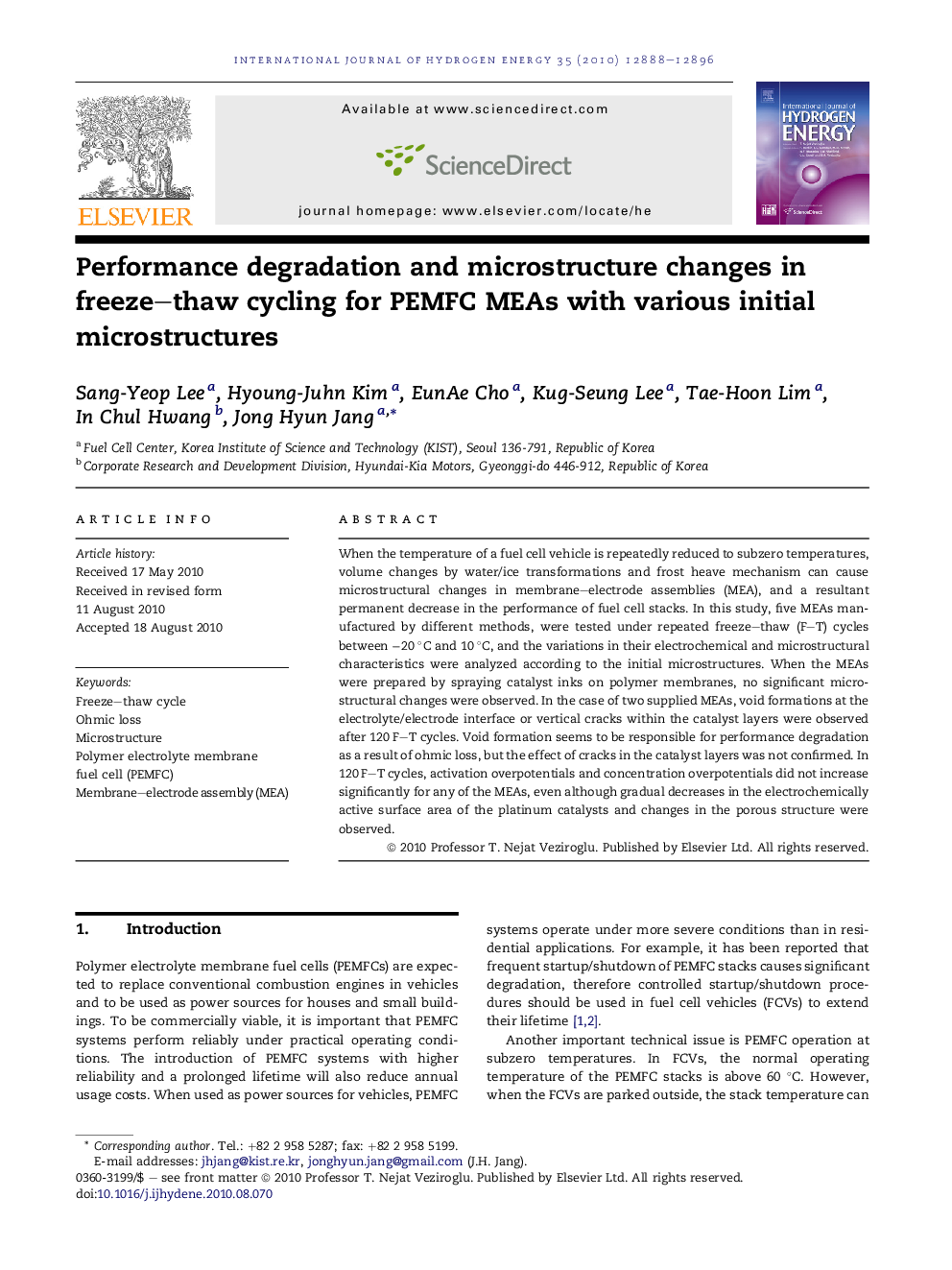| Article ID | Journal | Published Year | Pages | File Type |
|---|---|---|---|---|
| 1279931 | International Journal of Hydrogen Energy | 2010 | 9 Pages |
When the temperature of a fuel cell vehicle is repeatedly reduced to subzero temperatures, volume changes by water/ice transformations and frost heave mechanism can cause microstructural changes in membrane–electrode assemblies (MEA), and a resultant permanent decrease in the performance of fuel cell stacks. In this study, five MEAs manufactured by different methods, were tested under repeated freeze–thaw (F–T) cycles between −20 °C and 10 °C, and the variations in their electrochemical and microstructural characteristics were analyzed according to the initial microstructures. When the MEAs were prepared by spraying catalyst inks on polymer membranes, no significant microstructural changes were observed. In the case of two supplied MEAs, void formations at the electrolyte/electrode interface or vertical cracks within the catalyst layers were observed after 120 F–T cycles. Void formation seems to be responsible for performance degradation as a result of ohmic loss, but the effect of cracks in the catalyst layers was not confirmed. In 120 F–T cycles, activation overpotentials and concentration overpotentials did not increase significantly for any of the MEAs, even although gradual decreases in the electrochemically active surface area of the platinum catalysts and changes in the porous structure were observed.
